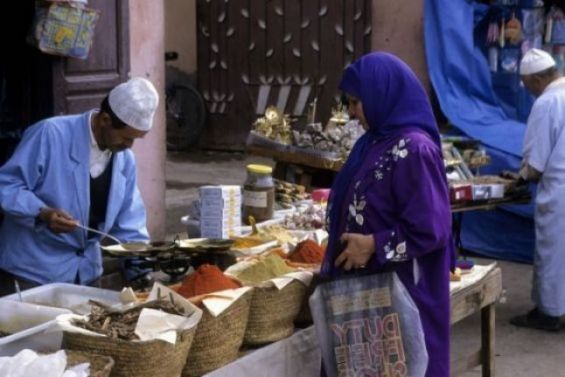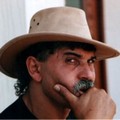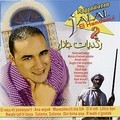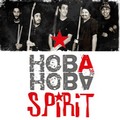Being able to communicate has been a huge deal for humans throughout history. In North Africa and in Morocco, it was also the case. Moroccans spoke different dialects and languages in an attempt to communicate with the many ethnicities that once lived in the Kingdom and to trade.
The dialect currently spoken in Morocco, also known as Darija, is a concrete outcome of all these cultural influences. It makes of Morocco a linguistically complex speech community, where Berber, Arabic, French and other ancient languages have left their footprints.
Linguists have used different approaches to address the emergence of Darija, studying both Classical Arabic and Berber. While some of them believe that Moroccan Arabic is very close to Classical Arabic, others claim that the dialect is closer phonologically and syntactically to Berber.
Darija and Classical Arabic
In her book «Women, Gender, and Language in Morocco» (Brill, 2003), Moroccan linguist Fatima Sadiqi states that «Moroccan Arabic or Darija shares many linguistic aspects with Standard Arabic». However, she stresses that «most linguistic works on the history of Arabic dialects do not derive them from even Classical Arabic, rather, it sees Classical Arabic and the dialects as having a common ancestor».
Moreover, the linguist reports that «much of these works doubt that Classical Arabic was even really spoken as a language of daily life». «In its present-day form, Moroccan Arabic has lost much of its morpho-syntactic, lexical, and phonological resemblance to Standard Arabic», she explained.
The same idea was conveyed by other linguists, who believe that although Darija can be close to Standard or Classical Arabic the dialect has been influenced by other languages. According to the book of Aleya Rouchdy «Language Contact and Language Conflict in Arabic» (Routledge, 2013), «Moroccan Arabic is of the low variety given that it is neither codified not standardized».
To Rouchdy, «it is a variety spoken by the vast majority of the population» that is «phonologically characterized by vowel drop» when compared to Standard or Classical Arabic. But the researcher indicates that «Moroccan Arabic has borrowed extensively», from French, as well as Berber.
«Compared to the Middle East and even Maghrebi dialectal Arabics, Moroccan Arabic is considered the most deviant version of Standard Arabic, as it is the farthest west from the Middle Eastern ‘pure’ Arabic», Sadiqi adds.
Linguistically, this «deviance is attested in the remarkable compression of vowels, the great phonological variation, and the Subject-Verb-Object word order, as opposed to the typical Verb-Subject-Object word order of Standard Arabic», the researcher explains.
Moroccan Arabic and the influence of Berber
To the linguist «the great influence of Berber on Moroccan Arabic at the phonological, morphological, syntactic, and semantic levels are largely responsible for this ‘deviance’».
But long before studying the influence of Berber on Moroccan Arabic, historians and linguists were interested in other aspects. According to linguists Mostafa Benabbou and Peter Behnstedt, understanding the origins of Moroccan Arabic requires studying pre-Berber items, left by Phoenicians, Byzantines and Vandals.
The two researchers point at Roman words that emphasize the heritage left by Romans in Morocco, such as «Lixus, Volubilis, Tingis, Zilis for Larache, Walili, Tangier and Asilah» and the Greek or Latin origins of some words. To them, we must also take into account the influences brought by Arabs and Jews expelled from Spain, the Spanish and French colonizers.
A lingua franca to unify dialects
Exploring theses related to the relationship between Arabic and Tamazight, Moroccan researcher El Houssain El Moujahid cites one of them that concludes that «Moroccan Arabic is the outcome of an interaction between Classical Arabic and Tamazight». He believes that Berber «contributed to the emergence and development of Moroccan Arabic».
El Houssain El Moujahid also exposes the sociolinguistic approach that considers Moroccan Arabic and Tamazight as «two poles of dialectal-Amazigh diglossia».
This approach claims that «the two languages are not directly related, since dialectal Arabic is a Semitic language and Tamazight is a Hamito-Semitic (Afro-Asian) language» and their linguistic structures are quite distinct. It concludes that «Berber would be the dominated variety in the dialectal-Amazigh pair».
Moroccans thus have a «lingua franca», a vehicular language or a dialect used as a means of communication between the different Arab and Amazigh populations of the Kingdom. This need is «motivated by the presence of three main Amazigh dialects and many sub-dialects», says Elabbas Benmamoun in his book «Perspectives on Arabic Linguistics XIX: Papers from the Nineteenth Annual Symposium on Arabic Linguistics» (John Benjamins Publishing, 2007).
This use has «helped reduce the differences between dialects and promote inter-understandability between Moroccan Arabic dialects», says Fatima Sadiqi.





 chargement...
chargement...













